Nobel Prize
| Nobel Prize | |
|---|---|
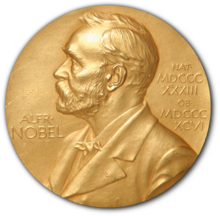 | |
| Awarded for | Outstanding contributions for humanity in chemistry, literature, peace, physics, physiology or medicine, and economic sciences |
| Country | |
| Presented by |
|
| Reward(s) | Prize money of 9 million SEK, approx. US$986,000 (2018);[1] a medal;[2] and a diploma |
| First awarded | 1901 |
| Number of laureates | 590 prizes to 935 laureates (as of 2018)[1] |
| Website | nobelprize |
The Nobel Prize (/ˈnoʊbɛl/, Swedish pronunciation: [nʊˈbɛlː]; Swedish definite form, singular: Nobelpriset; Norwegian: Nobelprisen) is a set of annual international awards bestowed in several categories by Swedish and Norwegian institutions in recognition of academic, cultural, or scientific advances.
The will of the Swedish scientist Alfred Nobel established the five Nobel prizes in 1895. The prizes in Chemistry, Literature, Peace, Physics, and Physiology or Medicine were first awarded in 1901.[1][3][4] In 1968, Sweden's central bank, Sveriges Riksbank, established the Sveriges Riksbank Prize in Economic Sciences in Memory of Alfred Nobel, which, although not being a Nobel Prize,[5] has become informally known as the "Nobel Prize in Economics".[6][7][8] The prizes are widely regarded as the most prestigious awards available in the fields of chemistry, literature, peace activism, physics, and physiology or medicine.[9][10][11]
The Royal Swedish Academy of Sciences awards the Nobel Prize in Chemistry, the Nobel Prize in Physics, and the Sveriges Riksbank Prize in Economic Sciences in Memory of Alfred Nobel; the Nobel Assembly at the Karolinska Institute awards the Nobel Prize in Physiology or Medicine; the Swedish Academy grants the Nobel Prize in Literature; and the Nobel Peace Prize is awarded by the Norwegian Nobel Committee.
Between 1901 and 2018, the Nobel Prizes (and the Prizes in Economic Sciences, from 1969 on) were awarded 590 times to 935 people and organizations.[1] With some receiving the Nobel Prize more than once, this makes a total of 27 organizations and 908 individuals.[1][12] The prize ceremonies take place annually in Stockholm, Sweden (with the exception of the Peace Prize ceremony, which is held in Oslo, Norway). Each recipient (known as a "laureate") receives a gold medal, a diploma, and a sum of money that has been decided by the Nobel Foundation. (As of 2017, each prize is worth 9,000,000 SEK, or about US$1,110,000, €944,000, £836,000 or ₹73,800,000.[13]) Medals made before 1980 were struck in 23 carat gold, and later in 18 carat green gold plated with a 24 carat gold coating.
The prize is not awarded posthumously; however, if a person is awarded a prize and dies before receiving it, the prize may still be presented.[14] A prize may not be shared among more than three individuals, although the Nobel Peace Prize can be awarded to organizations of more than three people.[15]
Contents
History[edit]
Alfred Nobel ( listen (help·info)) was born on 21 October 1833 in Stockholm, Sweden, into a family of engineers.[16] He was a chemist, engineer, and inventor. In 1894, Nobel purchased the Bofors iron and steel mill, which he made into a major armaments manufacturer. Nobel also invented ballistite. This invention was a precursor to many smokeless military explosives, especially the British smokeless powder cordite. As a consequence of his patent claims, Nobel was eventually involved in a patent infringement lawsuit over cordite. Nobel amassed a fortune during his lifetime, with most of his wealth coming from his 355 inventions, of which dynamite is the most famous.[17]
listen (help·info)) was born on 21 October 1833 in Stockholm, Sweden, into a family of engineers.[16] He was a chemist, engineer, and inventor. In 1894, Nobel purchased the Bofors iron and steel mill, which he made into a major armaments manufacturer. Nobel also invented ballistite. This invention was a precursor to many smokeless military explosives, especially the British smokeless powder cordite. As a consequence of his patent claims, Nobel was eventually involved in a patent infringement lawsuit over cordite. Nobel amassed a fortune during his lifetime, with most of his wealth coming from his 355 inventions, of which dynamite is the most famous.[17]
In 1888, Nobel was astonished to read his own obituary, titled The merchant of death is dead, in a French newspaper. As it was Alfred's brother Ludvig who had died, the obituary was eight years premature. The article disconcerted Nobel and made him apprehensive about how he would be remembered. This inspired him to change his will.[18] On 10 December 1896, Alfred Nobel died in his villa in San Remo, Italy, from a cerebral haemorrhage. He was 63 years old.[19]
Nobel wrote several wills during his lifetime. He composed the last over a year before he died, signing it at the Swedish–Norwegian Club in Paris on 27 November 1895.[20][21] To widespread astonishment, Nobel's last will specified that his fortune be used to create a series of prizes for those who confer the "greatest benefit on mankind" in physics, chemistry, physiology or medicine, literature, and peace.[22] Nobel bequeathed 94% of his total assets, 31 million SEK (c. US$186 million, €150 million in 2008), to establish the five Nobel Prizes.[23][24] Because of skepticism surrounding the will, it was not until 26 April 1897 that it was approved by the Storting in Norway.[25] The executors of Nobel's will, Ragnar Sohlman and Rudolf Lilljequist, formed the Nobel Foundation to take care of Nobel's fortune and organised the award of prizes.[26]
Nobel's instructions named a Norwegian Nobel Committee to award the Peace Prize, the members of whom were appointed shortly after the will was approved in April 1897. Soon thereafter, the other prize-awarding organizations were designated. These were Karolinska Institutet on 7 June, the Swedish Academy on 9 June, and the Royal Swedish Academy of Sciences on 11 June.[27] The Nobel Foundation reached an agreement on guidelines for how the prizes should be awarded; and, in 1900, the Nobel Foundation's newly created statutes were promulgated by King Oscar II.[22] In 1905, the personal union between Sweden and Norway was dissolved.
Nobel Foundation[edit]
Formation of Foundation[edit]
According to his will and testament read in Stockholm on 30 December 1896, a foundation established by Alfred Nobel would reward those who serve humanity. The Nobel Prize was funded by Alfred Nobel's personal fortune. According to the official sources, Alfred Nobel bequeathed from the shares 94% of his fortune to the Nobel Foundation that now forms the economic base of the Nobel Prize.[28]
The Nobel Foundation was founded as a private organization on 29 June 1900. Its function is to manage the finances and administration of the Nobel Prizes.[29] In accordance with Nobel's will, the primary task of the Foundation is to manage the fortune Nobel left. Robert and Ludvig Nobel were involved in the oil business in Azerbaijan, and according to Swedish historian E. Bargengren, who accessed the Nobel family archives, it was this "decision to allow withdrawal of Alfred's money from Baku that became the decisive factor that enabled the Nobel Prizes to be established".[30] Another important task of the Nobel Foundation is to market the prizes internationally and to oversee informal administration related to the prizes. The Foundation is not involved in the process of selecting the Nobel laureates.[31][32] In many ways, the Nobel Foundation is similar to an investment company, in that it invests Nobel's money to create a solid funding base for the prizes and the administrative activities. The Nobel Foundation is exempt from all taxes in Sweden (since 1946) and from investment taxes in the United States (since 1953).[33] Since the 1980s, the Foundation's investments have become more profitable and as of 31 December 2007, the assets controlled by the Nobel Foundation amounted to 3.628 billion Swedish kronor (c. US$560 million).[34]
According to the statutes, the Foundation consists of a board of five Swedish or Norwegian citizens, with its seat in Stockholm. The Chairman of the Board is appointed by the Swedish King in Council, with the other four members appointed by the trustees of the prize-awarding institutions. An Executive Director is chosen from among the board members, a Deputy Director is appointed by the King in Council, and two deputies are appointed by the trustees. However, since 1995, all the members of the board have been chosen by the trustees, and the Executive Director and the Deputy Director appointed by the board itself. As well as the board, the Nobel Foundation is made up of the prize-awarding institutions (the Royal Swedish Academy of Sciences, the Nobel Assembly at Karolinska Institute, the Swedish Academy, and the Norwegian Nobel Committee), the trustees of these institutions, and auditors.[34]
Foundation capital and cost[edit]
The capital of the Nobel Foundation today is invested 50 % in shares, 20 % bonds and 30 % other investments (e.g. hedge funds or real estate). The distribution can vary by 10 percent.[35] At the beginning of 2008, 64 % of the funds were invested mainly in American and European stocks, 20 % in bonds, plus 12% in real estate and hedge funds.[36]
In 2011, the total annual cost was approximately 120 million krona, with 50 million krona as the prize money. Further costs to pay institutions and persons engaged in giving the prizes were 27,4 million krona. The events during the Nobel week in Stockholm and Oslo cost 20,2 million krona. The administration, Nobel symposium, and similar items had costs of 22.4 million krona. The cost of the Economic Sciences prize of 16.5 Million krona is paid by the Sveriges Riksbank.[35]
First prizes[edit]
Once the Nobel Foundation and its guidelines were in place, the Nobel Committees began collecting nominations for the inaugural prizes. Subsequently, they sent a list of preliminary candidates to the prize-awarding institutions.
The Nobel Committee's Physics Prize shortlist cited Wilhelm Röntgen's discovery of X-rays and Philipp Lenard's work on cathode rays. The Academy of Sciences selected Röntgen for the prize.[37][38] In the last decades of the 19th century, many chemists had made significant contributions. Thus, with the Chemistry Prize, the Academy "was chiefly faced with merely deciding the order in which these scientists should be awarded the prize".[39]The Academy received 20 nominations, eleven of them for Jacobus van 't Hoff.[40] Van 't Hoff was awarded the prize for his contributions in chemical thermodynamics.[41][42]
The Swedish Academy chose the poet Sully Prudhomme for the first Nobel Prize in Literature. A group including 42 Swedish writers, artists, and literary critics protested against this decision, having expected Leo Tolstoy to be awarded.[43] Some, including Burton Feldman, have criticised this prize because they consider Prudhomme a mediocre poet. Feldman's explanation is that most of the Academy members preferred Victorian literatureand thus selected a Victorian poet.[44] The first Physiology or Medicine Prize went to the German physiologist and microbiologist Emil von Behring. During the 1890s, von Behring developed an antitoxin to treat diphtheria, which until then was causing thousands of deaths each year.[45][46]
The first Nobel Peace Prize went to the Swiss Jean Henri Dunant for his role in founding the International Red Cross Movement and initiating the Geneva Convention, and jointly given to French pacifist Frédéric Passy, founder of the Peace League and active with Dunant in the Alliance for Order and Civilization.
Second World War[edit]
In 1938 and 1939, Adolf Hitler's Third Reich forbade three laureates from Germany (Richard Kuhn, Adolf Friedrich Johann Butenandt, and Gerhard Domagk) from accepting their prizes.[47] Each man was later able to receive the diploma and medal.[48] Even though Sweden was officially neutral during the Second World War, the prizes were awarded irregularly. In 1939, the Peace Prize was not awarded. No prize was awarded in any category from 1940 to 1942, due to the occupation of Norway by Germany. In the subsequent year, all prizes were awarded except those for literature and peace.[49]
During the occupation of Norway, three members of the Norwegian Nobel Committee fled into exile. The remaining members escaped persecution from the Germans when the Nobel Foundation stated that the Committee building in Oslo was Swedish property. Thus it was a safe haven from the German military, which was not at war with Sweden.[50] These members kept the work of the Committee going, but did not award any prizes. In 1944, the Nobel Foundation, together with the three members in exile, made sure that nominations were submitted for the Peace Prize and that the prize could be awarded once again.[47]
Prize in Economic Sciences[edit]
In 1968, Sveriges Riksbank (Sweden's central bank) celebrated its 300th anniversary by donating a large sum of money to the Nobel Foundation to be used to set up a prize in honor of Nobel. The following year, the Sveriges Riksbank Prize in Economic Sciences in Memory of Alfred Nobel was awarded for the first time. The Royal Swedish Academy of Sciences became responsible for selecting laureates. The first laureates for the Economics Prize were Jan Tinbergen and Ragnar Frisch "for having developed and applied dynamic models for the analysis of economic processes".[51][52] The Board of the Nobel Foundation decided that after this addition, it would allow no further new prizes.[53]
Award process[edit]
The award process is similar for all of the Nobel Prizes; the main difference is in who can make nominations for each of them.[54]
Nominations[edit]
Nomination forms are sent by the Nobel Committee to about 3,000 individuals, usually in September the year before the prizes are awarded. These individuals are generally prominent academics working in a relevant area. Regarding the Peace Prize, inquiries are also sent to governments, former Peace Prize laureates, and current or former members of the Norwegian Nobel Committee. The deadline for the return of the nomination forms is 31 January of the year of the award.[54][55] The Nobel Committee nominates about 300 potential laureates from these forms and additional names.[56] The nominees are not publicly named, nor are they told that they are being considered for the prize. All nomination records for a prize are sealed for 50 years from the awarding of the prize.[57][58]
Selection[edit]
The Nobel Committee then prepares a report reflecting the advice of experts in the relevant fields. This, along with the list of preliminary candidates, is submitted to the prize-awarding institutions.[59] The institutions meet to choose the laureate or laureates in each field by a majority vote. Their decision, which cannot be appealed, is announced immediately after the vote.[60] A maximum of three laureates and two different works may be selected per award. Except for the Peace Prize, which can be awarded to institutions, the awards can only be given to individuals.[61]
Posthumous nominations[edit]
Although posthumous nominations are not presently permitted, individuals who died in the months between their nomination and the decision of the prize committee were originally eligible to receive the prize. This has occurred twice: the 1931 Literature Prize awarded to Erik Axel Karlfeldt, and the 1961 Peace Prize awarded to UN Secretary General Dag Hammarskjöld. Since 1974, laureates must be thought alive at the time of the October announcement. There has been one laureate, William Vickrey, who in 1996 died after the prize (in Economics) was announced but before it could be presented.[62] On 3 October 2011, the laureates for the Nobel Prize in Physiology or Medicine were announced; however, the committee was not aware that one of the laureates, Ralph M. Steinman, had died three days earlier. The committee was debating about Steinman's prize, since the rule is that the prize is not awarded posthumously.[14] The committee later decided that as the decision to award Steinman the prize "was made in good faith", it would remain unchanged.[63]
Recognition time lag[edit]
Nobel's will provided for prizes to be awarded in recognition of discoveries made "during the preceding year". Early on, the awards usually recognised recent discoveries.[64]However, some of those early discoveries were later discredited. For example, Johannes Fibiger was awarded the 1926 Prize in Physiology or Medicine for his purported discovery of a parasite that caused cancer.[65] To avoid repeating this embarrassment, the awards increasingly recognised scientific discoveries that had withstood the test of time.[66][67][68]According to Ralf Pettersson, former chairman of the Nobel Prize Committee for Physiology or Medicine, "the criterion 'the previous year' is interpreted by the Nobel Assembly as the year when the full impact of the discovery has become evident."[67]
The interval between the award and the accomplishment it recognises varies from discipline to discipline. The Literature Prize is typically awarded to recognise a cumulative lifetime body of work rather than a single achievement.[69][70] The Peace Prize can also be awarded for a lifetime body of work. For example, 2008 laureate Martti Ahtisaari was awarded for his work to resolve international conflicts.[71][72] However, they can also be awarded for specific recent events.[73] For instance, Kofi Annan was awarded the 2001 Peace Prize just four years after becoming the Secretary-General of the United Nations.[74] Similarly Yasser Arafat, Yitzhak Rabin, and Shimon Peres received the 1994 award, about a year after they successfully concluded the Oslo Accords.[75]
Awards for physics, chemistry, and medicine are typically awarded once the achievement has been widely accepted. Sometimes, this takes decades – for example, Subrahmanyan Chandrasekhar shared the 1983 Physics Prize for his 1930s work on stellar structure and evolution.[76][77] Not all scientists live long enough for their work to be recognised. Some discoveries can never be considered for a prize if their impact is realised after the discoverers have died.[78][79][80]
Award ceremonies[edit]
Except for the Peace Prize, the Nobel Prizes are presented in Stockholm, Sweden, at the annual Prize Award Ceremony on 10 December, the anniversary of Nobel's death. The recipients' lectures are normally held in the days prior to the award ceremony. The Peace Prize and its recipients' lectures are presented at the annual Prize Award Ceremony in Oslo, Norway, usually on 10 December. The award ceremonies and the associated banquets are typically major international events.[81][82] The Prizes awarded in Sweden's ceremonies' are held at the Stockholm Concert Hall, with the Nobel banquet following immediately at Stockholm City Hall. The Nobel Peace Prize ceremony has been held at the Norwegian Nobel Institute (1905–1946), at the auditorium of the University of Oslo (1947–1989), and at Oslo City Hall (1990–present).[83]
The highlight of the Nobel Prize Award Ceremony in Stockholm occurs when each Nobel laureate steps forward to receive the prize from the hands of the King of Sweden. In Oslo, the Chairman of the Norwegian Nobel Committee presents the Nobel Peace Prize in the presence of the King of Norway.[82][84] At first, King Oscar II did not approve of awarding grand prizes to foreigners. It is said that he changed his mind once his attention had been drawn to the publicity value of the prizes for Sweden.[85]
Nobel Banquet[edit]
After the award ceremony in Sweden, a banquet is held in the Blue Hall at the Stockholm City Hall, which is attended by the Swedish Royal Family and around 1,300 guests.
The Nobel Peace Prize banquet is held in Norway at the Oslo Grand Hotel after the award ceremony. Apart from the laureate, guests include the President of the Storting, the Swedish prime minister, and, since 2006, the King and Queen of Norway. In total, about 250 guests attend.
Nobel lecture[edit]
According to the statutes of the Nobel Foundation, each laureate is required to give a public lecture on a subject related to the topic of their prize.[86] The Nobel lecture as a rhetorical genre took decades to reach its current format.[87] These lectures normally occur during Nobel Week (the week leading up to the award ceremony and banquet, which begins with the laureates arriving in Stockholm and normally ends with the Nobel banquet), but this is not mandatory. The laureate is only obliged to give the lecture within six months of receiving the prize. Some have happened even later. For example, US President Theodore Roosevelt received the Peace Prize in 1906 but gave his lecture in 1910, after his term in office.[88] The lectures are organized by the same association which selected the laureates.[89]
Prizes[edit]
Medals[edit]
It was announced on 30 May 2012 that the Nobel Foundation had awarded the contract for the production of the five (Swedish) Nobel Prize medals to Svenska Medalj AB. Formerly, the Nobel Prize medals were minted by Myntverket (the Swedish Mint) from 1902 to 2010. Myntverket, Sweden's oldest company, ceased operations in 2011 after 1,017 years. In 2011, the Mint of Norway, located in Kongsberg, made the medals. The Nobel Prize medals are registered trademarks of the Nobel Foundation.[90] Each medal features an image of Alfred Nobel in left profile on the obverse. The medals for physics, chemistry, physiology or medicine, and literature have identical obverses, showing the image of Alfred Nobel and the years of his birth and death. Nobel's portrait also appears on the obverse of the Peace Prize medal and the medal for the Economics Prize, but with a slightly different design. For instance, the laureate's name is engraved on the rim of the Economics medal.[91] The image on the reverse of a medal varies according to the institution awarding the prize. The reverse sides of the medals for chemistry and physics share the same design.[92]
All medals made before 1980 were struck in 23 carat gold. Since then, they have been struck in 18 carat green gold plated with 24 carat gold. The weight of each medal varies with the value of gold, but averages about 175 grams (0.386 lb) for each medal. The diameter is 66 millimetres (2.6 in) and the thickness varies between 5.2 millimetres (0.20 in) and 2.4 millimetres (0.094 in).[93] Because of the high value of their gold content and tendency to be on public display, Nobel medals are subject to medal theft.[94][95][96] During World War II, the medals of German scientists Max von Laue and James Franck were sent to Copenhagen for safekeeping. When Germany invaded Denmark, Hungarian chemist (and Nobel laureate himself) George de Hevesy dissolved them in aqua regia (nitro-hydrochloric acid), to prevent confiscation by Nazi Germany and to prevent legal problems for the holders. After the war, the gold was recovered from solution, and the medals re-cast.[97]
Diplomas[edit]
Nobel laureates receive a diploma directly from the hands of the King of Sweden, or in the case of the peace prize, the Chairman of the Norwegian Nobel Committee. Each diploma is uniquely designed by the prize-awarding institutions for the laureates that receive them.[91]The diploma contains a picture and text in Swedish which states the name of the laureate and normally a citation of why they received the prize. None of the Nobel Peace Prize laureates has ever had a citation on their diplomas.[98][99]
Award money[edit]
The laureates are given a sum of money when they receive their prizes, in the form of a document confirming the amount awarded.[91] The amount of prize money depends upon how much money the Nobel Foundation can award each year. The purse has increased since the 1980s, when the prize money was 880,000 SEK per prize (c. 2.6 million SEK altogether, US$350,000 today). In 2009, the monetary award was 10 million SEK (US$1.4 million).[100][101] In June 2012, it was lowered to 8 million SEK.[102] If there are two laureates in a particular category, the award grant is divided equally between the recipients. If there are three, the awarding committee has the option of dividing the grant equally, or awarding one-half to one recipient and one-quarter to each of the others.[103][104][105] It is common for recipients to donate prize money to benefit scientific, cultural, or humanitarian causes.[106][107]
Controversies and criticisms[edit]
Controversial recipients[edit]
Among other criticisms, the Nobel Committees have been accused of having a political agenda, and of omitting more deserving candidates. They have also been accused of Eurocentrism, especially for the Literature Prize.[108][109][110]
- Peace Prize
Among the most criticised Nobel Peace Prizes was the one awarded to Henry Kissinger and Lê Đức Thọ. This led to the resignation of two Norwegian Nobel Committee members.[111] Kissinger and Thọ were awarded the prize for negotiating a ceasefire between North Vietnam and the United States in January 1973. However, when the award was announced, both sides were still engaging in hostilities.[112] Critics sympathetic to the North announced that Kissinger was not a peace-maker but the opposite, responsible for widening the war. Those hostile to the North and what they considered its deceptive practices during negotiations were deprived of a chance to criticise Lê Đức Thọ, as he declined the award. [57][113]
Yasser Arafat, Shimon Peres, and Yitzhak Rabin received the Peace Prize in 1994 for their efforts in making peace between Israel and Palestine.[57][114] Immediately after the award was announced, one of the five Norwegian Nobel Committee members denounced Arafat as a terrorist and resigned.[115] Additional misgivings about Arafat were widely expressed in various newspapers.[116]
Another controversial Peace Prize was that awarded to Barack Obama in 2009.[117] Nominations had closed only eleven days after Obama took office as President of the United States, but the actual evaluation occurred over the next eight months.[118] Obama himself stated that he did not feel deserving of the award,[119] or worthy of the company it would place him in.[120] Past Peace Prize laureates were divided, some saying that Obama deserved the award, and others saying he had not secured the achievements to yet merit such an accolade. Obama's award, along with the previous Peace Prizes for Jimmy Carter and Al Gore, also prompted accusations of a left-wing bias.[121]
- Literature Prize
The award of the 2004 Literature Prize to Elfriede Jelinek drew a protest from a member of the Swedish Academy, Knut Ahnlund. Ahnlund resigned, alleging that the selection of Jelinek had caused "irreparable damage to all progressive forces, it has also confused the general view of literature as an art". He alleged that Jelinek's works were "a mass of text shovelled together without artistic structure".[122][123] The 2009 Literature Prize to Herta Müller also generated criticism. According to The Washington Post, many US literary critics and professors were ignorant of her work.[124] This made those critics feel the prizes were too Eurocentric.[125]
- Science prizes
In 1949, the neurologist António Egas Moniz received the Physiology or Medicine Prize for his development of the prefrontal leucotomy. The previous year, Dr. Walter Freeman had developed a version of the procedure which was faster and easier to carry out. Due in part to the publicity surrounding the original procedure, Freeman's procedure was prescribed without due consideration or regard for modern medical ethics. Endorsed by such influential publications as The New England Journal of Medicine, leucotomy or "lobotomy" became so popular that about 5,000 lobotomies were performed in the United States in the three years immediately following Moniz's receipt of the Prize.[126][127]
Overlooked achievements[edit]
The Norwegian Nobel Committee confirmed that Mahatma Gandhi was nominated for the Peace Prize in 1937–39, 1947, and a few days before he was assassinated in January 1948.[128] Later, members of the Norwegian Nobel Committee expressed regret that he was not given the prize.[129]Geir Lundestad, Secretary of Norwegian Nobel Committee in 2006, said, "The greatest omission in our 106 year history is undoubtedly that Mahatma Gandhi never received the Nobel Peace prize. Gandhi could do without the Nobel Peace prize. Whether Nobel committee can do without Gandhi is the question".[130] In 1948, the year of Gandhi's death, the Nobel Committee declined to award a prize on the grounds that "there was no suitable living candidate" that year.[129][131] Later, when the 14th Dalai Lama was awarded the Peace Prize in 1989, the chairman of the committee said that this was "in part a tribute to the memory of Mahatma Gandhi".[132] Other high-profile individuals with widely recognised contributions to peace have been missed out. Foreign Policy lists Eleanor Roosevelt, Václav Havel, Ken Saro-Wiwa, Sari Nusseibeh, and Corazon Aquino as people who "never won the prize, but should have".[133]
In 1965, UN Secretary General U Thant was informed by the Norwegian Permanent Representative to the UN that he would be awarded that year's prize and asked whether or not he would accept. He consulted staff and later replied that he would. At the same time, Chairman Gunnar Jahn of the Nobel Peace prize committee, lobbied heavily against giving U Thant the prize and the prize was at the last minute awarded to UNICEF. The rest of the committee all wanted the prize to go to U Thant, for his work in defusing the Cuban Missile Crisis, ending the war in the Congo, and his ongoing work to mediate an end to the Vietnam War. The disagreement lasted three years and in 1966 and 1967 no prize was given, with Gunnar Jahn effectively vetoing an award to U Thant.[134][135]
The Literature Prize also has controversial omissions. Adam Kirsch has suggested that many notable writers have missed out on the award for political or extra-literary reasons. The heavy focus on European and Swedish authors has been a subject of criticism.[136][137] The Eurocentric nature of the award was acknowledged by Peter Englund, the 2009 Permanent Secretary of the Swedish Academy, as a problem with the award and was attributed to the tendency for the academy to relate more to European authors.[138] This tendency towards European authors still leaves some European writers on a list of notable writers that have been overlooked for the Literature Prize, including Europe's Leo Tolstoy, Anton Chekhov, J. R. R. Tolkien, Émile Zola, Marcel Proust, Vladimir Nabokov, James Joyce, August Strindberg, Simon Vestdijk, Karel Čapek, the New World's Jorge Luis Borges, Ezra Pound, John Updike, Arthur Miller, Mark Twain, and Africa's Chinua Achebe.[139]
Candidates can receive multiple nominations the same year. Gaston Ramon received a total of 155[140] nominations in physiology or medicine from 1930 to 1953, the last year with public nomination data for that award as of 2016. He died in 1963 without being awarded. Pierre Paul Émile Rouxreceived 115[141] nominations in physiology or medicine, and Arnold Sommerfeld received 84[142] in physics. These are the three most nominated scientists without awards in the data published as of 2016.[143] Otto Stern received 79[144] nominations in physics 1925–43 before being awarded in 1943.[145]
The strict rule against awarding a prize to more than three people is also controversial.[146] When a prize is awarded to recognise an achievement by a team of more than three collaborators, one or more will miss out. For example, in 2002, the prize was awarded to Koichi Tanaka and John Fenn for the development of mass spectrometry in protein chemistry, an award that did not recognise the achievements of Franz Hillenkamp and Michael Karas of the Institute for Physical and Theoretical Chemistry at the University of Frankfurt.[147][148] According to one of the nominees for the prize in physics, the three person limit deprived him and two other members of his team of the honor in 2013: the team of Carl Hagen, Gerald Guralnik, and Tom Kibble published a paper in 1964 that gave answers to how the cosmos began, but did not share the 2013 Physics Prize awarded to Peter Higgs and François Englert, who had also published papers in 1964 concerning the subject. All five physicists arrived at the same conclusion, albeit from different angles. Hagen contends that an equitable solution is to either abandon the three limit restriction, or expand the time period of recognition for a given achievement to two years.[149]
Similarly, the prohibition of posthumous awards fails to recognise achievements by an individual or collaborator who dies before the prize is awarded. The Economics Prize was not awarded to Fischer Black, who died in 1995, when his co-author Myron Scholes received the honor in 1997 for their landmark work on option pricing along with Robert C. Merton, another pioneer in the development of valuation of stock options. In the announcement of the award that year, the Nobel committee prominently mentioned Black's key role.
Political subterfuge may also deny proper recognition. Lise Meitner and Fritz Strassmann, who co-discovered nuclear fission along with Otto Hahn, may have been denied a share of Hahn's 1944 Nobel Chemistry Award due to having fled Germany when the Nazis came to power.[150] The Meitner and Strassmann roles in the research was not fully recognised until years later, when they joined Hahn in receiving the 1966 Enrico Fermi Award.
Emphasis on discoveries over inventions[edit]
Alfred Nobel left his fortune to finance annual prizes to be awarded "to those who, during the preceding year, shall have conferred the greatest benefit on mankind".[151] He stated that the Nobel Prizes in Physics should be given "to the person who shall have made the most important 'discovery' or 'invention' within the field of physics". Nobel did not emphasise discoveries, but they have historically been held in higher respect by the Nobel Prize Committee than inventions: 77% of the Physics Prizes have been given to discoveries, compared with only 23% to inventions. Christoph Bartneck and Matthias Rauterberg, in papers published in Nature and Technoetic Arts, have argued this emphasis on discoveries has moved the Nobel Prize away from its original intention of rewarding the greatest contribution to society.[152][153]
Gender disparity[edit]
In terms of the most prestigious awards in STEM fields, only a small proportion have been awarded to women. Out of 210 laureates in Physics, 181 in Chemistry and 216 in Medicine between 1901 and 2018, there were only three female laureates in physics, five in chemistry and 12 in medicine.[154][155] [156] [157]
Specially distinguished laureates[edit]
Multiple laureates[edit]
Four people have received two Nobel Prizes. Marie Curie received the Physics Prize in 1903 for her work on radioactivity and the Chemistry Prize in 1911 for the isolation of pure radium,[158] making her the only person to be awarded a Nobel Prize in two different sciences. Linus Pauling was awarded the 1954 Chemistry Prize for his research into the chemical bond and its application to the structure of complex substances. Pauling was also awarded the Peace Prize in 1962 for his activism against nuclear weapons, making him the only laureate of two unshared prizes. John Bardeenreceived the Physics Prize twice: in 1956 for the invention of the transistor and in 1972 for the theory of superconductivity.[159] Frederick Sangerreceived the prize twice in Chemistry: in 1958 for determining the structure of the insulin molecule and in 1980 for inventing a method of determining base sequences in DNA.[160][161]
Two organizations have received the Peace Prize multiple times. The International Committee of the Red Cross received it three times: in 1917 and 1944 for its work during the world wars; and in 1963 during the year of its centenary.[162][163][164] The United Nations High Commissioner for Refugees has been awarded the Peace Prize twice for assisting refugees: in 1954 and 1981.[165]
Family laureates[edit]
The Curie family has received the most prizes, with four prizes awarded to five individual laureates. Marie Curie received the prizes in Physics (in 1903) and Chemistry (in 1911). Her husband, Pierre Curie, shared the 1903 Physics prize with her.[166] Their daughter, Irène Joliot-Curie, received the Chemistry Prize in 1935 together with her husband Frédéric Joliot-Curie. In addition, the husband of Marie Curie's second daughter, Henry Labouisse, was the director of UNICEF when he accepted the Nobel Peace Prize in 1965 on that organisation's behalf.[167]
Although no family matches the Curie family's record, there have been several with two laureates. The husband-and-wife team of Gerty Cori and Carl Ferdinand Cori shared the 1947 Prize in Physiology or Medicine[168] as did the husband-and-wife team of May-Britt Moser and Edvard Moser in 2014 (along with John O'Keefe).[169] J. J. Thomson was awarded the Physics Prize in 1906 for showing that electrons are particles. His son, George Paget Thomson, received the same prize in 1937 for showing that they also have the properties of waves.[170] William Henry Bragg and his son, William Lawrence Bragg, shared the Physics Prize in 1915 for inventing the X-ray spectrometer.[171] Niels Bohr was awarded the Physics prize in 1922, as was his son, Aage Bohr, in 1975.[167][172] Manne Siegbahn, who received the Physics Prize in 1924, was the father of Kai Siegbahn, who received the Physics Prize in 1981.[167][173] Hans von Euler-Chelpin, who received the Chemistry Prize in 1929, was the father of Ulf von Euler, who was awarded the Physiology or Medicine Prize in 1970.[167] C. V. Raman was awarded the Physics Prize in 1930 and was the uncle of Subrahmanyan Chandrasekhar, who was awarded the same prize in 1983.[174][175] Arthur Kornberg received the Physiology or Medicine Prize in 1959; Kornberg's son, Roger later received the Chemistry Prize in 2006.[176] Jan Tinbergen, who was awarded the first Economics Prize in 1969, was the brother of Nikolaas Tinbergen, who received the 1973 Physiology or Medicine Prize.[167] Alva Myrdal, Peace Prize laureate in 1982, was the wife of Gunnar Myrdal who was awarded the Economics Prize in 1974.[167] Economics laureates Paul Samuelson and Kenneth Arrow were brothers-in-law. Frits Zernike, who was awarded the 1953 Physics Prize, is the great-uncle of 1999 Physics laureate Gerard 't Hooft.[177]
Cultural impact[edit]
Being a symbol of scientific or literary achievement that is recognisable worldwide, the Nobel Prize is often depicted in fiction. This includes films like The Prize and Nobel Son about fictional Nobel laureates as well as fictionalised accounts of stories surrounding real prizes such as Nobel Chor, a film based on the unsolved theft of Rabindranath Tagore's prize.[178][179]
Refusals and constraints[edit]
Two laureates have voluntarily declined the Nobel Prize. In 1964, Jean-Paul Sartre was awarded the Literature Prize but refused, stating, "A writer must refuse to allow himself to be transformed into an institution, even if it takes place in the most honourable form."[180] Lê Đức Thọ, chosen for the 1973 Peace Prize for his role in the Paris Peace Accords, declined, stating that there was no actual peace in Vietnam.[181]
During the Third Reich, Adolf Hitler hindered Richard Kuhn, Adolf Butenandt, and Gerhard Domagk from accepting their prizes. All of them were awarded their diplomas and gold medals after World War II. In 1958, Boris Pasternak declined his prize for literature due to fear of what the Soviet Union government might do if he travelled to Stockholm to accept his prize. In return, the Swedish Academy refused his refusal, saying "this refusal, of course, in no way alters the validity of the award."[181] The Academy announced with regret that the presentation of the Literature Prize could not take place that year, holding it back until 1989 when Pasternak's son accepted the prize on his behalf.[182][183] Aung San Suu Kyi was awarded the Nobel Peace Prize in 1991, but her children accepted the prize because she had been placed under house arrest in Burma; Suu Kyi delivered her speech two decades later, in 2012.[184] Liu Xiaobo was awarded the Nobel Peace Prize in 2010 while he and his wife were under house arrest in China as political prisoners, and he was unable to accept the prize in his lifetime.

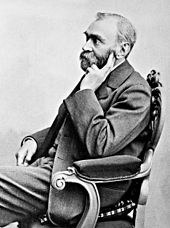
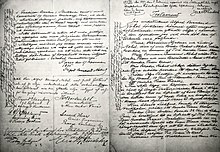
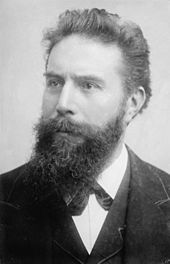

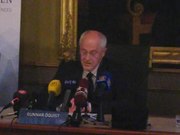
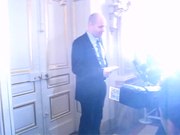
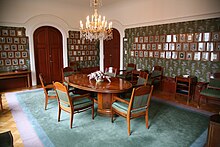
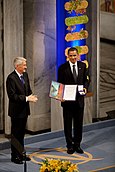



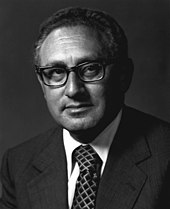

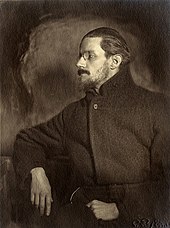
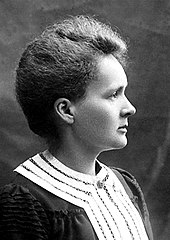


ಕಾಮೆಂಟ್ಗಳಿಲ್ಲ:
ಕಾಮೆಂಟ್ ಪೋಸ್ಟ್ ಮಾಡಿ